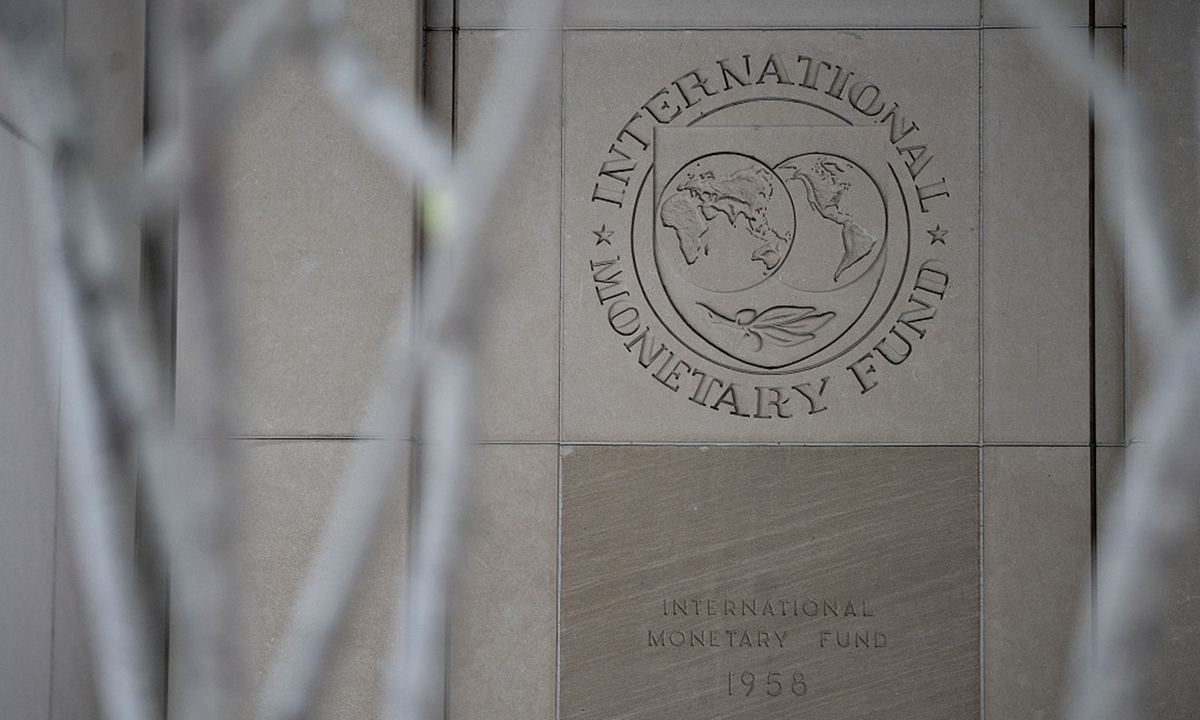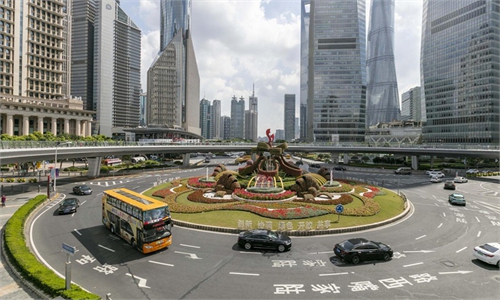
IMF Photo: VCG
While the world economy is grappling with difficulties including high inflation, geopolitical struggles and the pandemic, it is widely accepted that Asia will remain the main engine of global economic growth in 2023, with China and India being the main drivers. The two countries have massive potential to cooperate and jointly contribute more to global development; however, hurdles for such cooperation are rising, as the US steps up its attempt to loop India into its containment strategy against China.
The IMF said on Tuesday that China and India will account for half of global economic growth this year as the multilateral agency raised its 2023 global growth outlook to 2.9 percent from the previous forecast of 2.7 percent growth. “India remains a bright spot. Together with China, it will account for half of global growth this year, versus just a tenth for the US and euro area combined,” the IMF said in its latest update to the biannual World Economic Outlook.
So far, despite views still being divided over the performance of the US and European economies this year, confidence in the Chinese and Indian economies seems unquestionable.
Specifically, with China's optimization of anti-COVID-19 response, economic activity and normal life have been revived, with the domestic consumption recovering at an astonishing speed during the Chinese New Year holidays. The faster-than-expected recovery in China's consumer market will be a pillar boosting its economic recovery, which many financial institutions expect will achieve a growth of more than 5 percent in 2023.
India’s economic growth for 2023 is expected to reach 6.1 percent, according to the IMF forecast. That means the South Asian nation will remain the fastest-growing economy in the world with the current estimates surpassing overall growth in emerging and developing economies in Asia.
Under such circumstances, the crux for the global economic recovery this year hinges in large part on the question as to whether the growth opportunities brought by China and India could inject sufficient impetus into the world economy. For anyone with the basic knowledge of global economic and trade landscape, it is not hard to tell how strengthened cooperation with such robust economies as China and India could help the world weather difficult times.
Yet, it is important to note that closer economic cooperation should be based on economic considerations, and never geopolitical struggles. At present, the US’ push for a technological "decoupling" and abnormal transfer of industrial chains is becoming one of the biggest worries for the global economic recovery in 2023. For instance, the IMF said in its staff report in mid-January that after decades of increasing global economic integration, the world is facing the risk of fragmentation, which could reduce global economic output by up to 7 percent. And with the addition of technological "decoupling," the loss in output could reach 8 to 12 percent in some countries, it warned.
This is exactly why the latest partnership between the US and India seems to be adding to such concerns, instead of optimism, about regional economic development. The White House launched a partnership with India on Tuesday that President Joe Biden hopes will help the countries compete against China on military equipment, semiconductors and artificial intelligence, Reuters reported.
Apparently, the US’ attempt to integrate India into its supply and industrial chains is aimed at ensuring its own dominance in some key sectors by substituting China's position in the global industrial chains. If global cooperation continues to be hijacked by the US geopolitical calculations, it will not only lead to the "decoupling" and restructuring of global industrial chains, but also affect India's own development, to the detriment of the global economic recovery.
This is because if the Indian economy fares in the direction set by the US, it will become increasingly dependent on the US. There is no denying that India needs the US as a big market, which is why US-India trade has grown relatively rapidly in recent years. But the further development of the Indian economy, especially the upgrading of the Indian manufacturing sector, requires thorough reforms of the Indian economy itself, not the US’ “help.” An overreliance on the US will hinder reform efforts in India, as reflected in the experiences of many developing economies, which ends up undermining the competitiveness of India’s own national manufacturing sector.
The author is a reporter with the Global Times. bizopinion@globaltimes.com.cn



